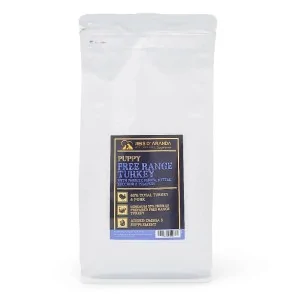The Tornjak originated from genetically homogeneous, almost extinct, indigenous shepherd dogs. These dogs have...
CANINE PARVOVIRUS
INTRODUCTION
Canine parvovirus is one of the major canine viral diseases. It mainly affects puppies, but can also infect cats, causing alteration of the intestinal villi, clinically manifested as bloody and foul-smelling diarrhoea, together with a deterioration of the physical and internal condition of the animal.
The prognosis is fair with somewhat complicated treatment for puppies with advanced infection. The symptomatology of the animal will depend on the viral load present. For this reason, a correct diagnosis and early treatment is necessary. Treatment is based on a diet rich in electrolytes, together with intravenous water and electrolyte replacement, requiring immediate hospital admission in some cases.
WHAT IS CANINE PARVOVIRUS?
Canine parvovirus type 2 is the leading cause of viral enteritis in dogs. It first appeared in the late 1970s, characterised by a picture of severe haemorrhagic diarrhoea and vomiting. The disease was initially accompanied by large economic losses in civilian and military kennels in the United States of America, where it was first studied.
Canine parvovirus type 2 (CPV-2) is related to feline panleukopenia virus (FLPV), mink enteritis virus (MEV), raccoon parvovirus (RPV) and blue fox parvovirus (BFPV), with which it shares genetic similarities.
It is a disease of high morbidity (proportion of living organisms that become ill at a given site and time) and mortality (proportion of living organisms that die at a given site and time in relation to the total population) with worldwide distribution and variant strains. There are: canine parvovirus type 2 a-b and c.
CPV-2 mainly affects young animals (puppies) as it requires cells in high division rate (mitosis). Currently, studies have been described where adult dogs with similar symptomatology are affected.
SYMPTOMS OF CANINE PARVOVIRUS
The symptoms that can appear as a result of Parvovirus infection, which will usually attack the lymphatic and intestinal tissue first, are:
- Diarrhoea (usually accompanied by haemorrhage).
- Vomiting.
- Fever.
- Lack of appetite and weakness.
- Apathy and/or lethargy.
- depression
- weight loss
- Pain on palpation of the abdomen.
In more severe cases, dehydration (more or less severe, as the virus affects the intestinal tract) and death of the patient.
Sometimes the disease can occur without necessarily being associated with symptoms, for example in the case of adult dogs that contract it, but are more resistant to the disease.
The virus acts by damaging the cells of the intestinal epithelium and it is common for these lesions to allow bacteria normally present in the intestinal flora to drift into the bloodstream and cause a generalised bacterial infection, leading to septic or endotoxic shock, which may be accompanied by disseminated intravascular coagulation (DIC).
The severity of the symptoms in the puppy will depend on its immune status, its age, the number of parvo vaccines administered and the amount of virus to which it has been exposed, as well as the breed of puppy, as there are breeds that are genetically less likely to respond satisfactorily to treatment (Doberman Pinschers, Rottweiler, German Shepherd...).
CPV-2 is present in large quantities in faecal matter of infected dogs from where it is transmitted by oro-nasal contact to the healthy animal.
Once inside; this virus needs cells with a high reproduction rate:
- Lymphoid tissue
- Cardiac cells
- Intestinal cells
- Bone marrow
CPV-2 is highly resistant to the environment, lasting from 6 months to 1 year. For this reason it is important for its control the correct sanitation and disinfection of places where canines with this pathology have lived.
Its incubation period is 5 to 10 days depending on the viral strain, the animal's condition and maternal antibodies titres.
CPV-2 is characterised by two specific clinical forms, a cardiac and the better known ‘intestinal or digestive’ form. However, the first symptoms are characterised by lethargy, fever, inappetence, vomiting, dehydration and bloody diarrhoea. Mortality is higher in the cardiac form.
In the enteric form, diarrhoea usually appears 6 to 24 hours after the first symptoms and vomiting may or may not be present. The vomiting reflex is often present, but is unproductive (without content). The diarrhoea has a strong putrid odour and is bloody, leading to severe dehydration of the animal.
The cardiac form is mostly diagnosed in puppies under 12 weeks of age. It has a mortality rate of 50% to 60%. Puppies with this condition may appear dead with no previous symptomatology and this is due to failures in the nerve conduction of cardiac impulses. Some authors suggest that this occurs because the virus reaches the heart before the rest of the body's systems, thus causing the death of the animal.
HOW IS CANINE PARVOVIRUS PREVENTED?
Parvovirus cannot be cured by medication or home remedies alone. It is a potentially lethal virus that can affect other dogs in the household living with the carrier.
The best way to combat the spread of Parvovirus is by vaccinating puppies, so that our vet can tell us when is the best time to do it. In addition, habits that prevent the puppy from being exposed to the faeces of potentially infected dogs will help to minimise the chances of infection, such as preventing unvaccinated puppies from going out into the street or interacting with vaccinated, and therefore immunised, adult dogs.
However, if we do not take sufficient hygiene precautions and avoid contact with faecal matter from other dogs, CPV can be fatal in puppies or affected dogs with weak immune systems.
Proper deworming and vaccination against the disease is the only way to avoid the consequences of parvo, as well as other parasitic diseases.
CAN PARVOVIRUS BE CURED?
As with almost all viral infections, there are no specific treatments: they are all symptomatic and consist mainly of combating the symptoms, e.g. reversing dehydration, replenishing lost fluids and electrolytes (e.g. serum: Ringer lactate), controlling vomiting and diarrhoea with appropriate medication and avoiding secondary infections by administering antibiotics. Sick dogs should be kept warm and well fed, and separated from other dogs. Cleaning and disinfection of areas where dogs are housed is essential to control the spread of the virus. Mainly administer antiemetics and antacids, as well as anti-diarrhoeals, and as far as possible keep them on a diet for the first two days, so that food can be incorporated gradually. In recent years and in the wake of the H1N1 influenza virus, numerous statements on the web mention that the use of oseltamivir provides great improvements against parvovirus, being vital that it is administered within 48 hours of the virus becoming present. In February 2010, an article from Auburn University mentions that the use of oseltamivir against parvovirus is unclear, however it does make them gain weight and although more research is needed (as they only worked with 35 dogs) no adverse side effects were reported.
CONCLUSION
In the early stages of infection, rapid stool antigen tests can give false negative results. Adequate screening is crucial, as early diagnosis can make the difference in the treatment and recovery of the dog, as well as a correct vaccination schedule and getting your puppy from a reputable and safe place with a correctly completed vaccination booklet.
Leave a comment
Log in to post comments
















